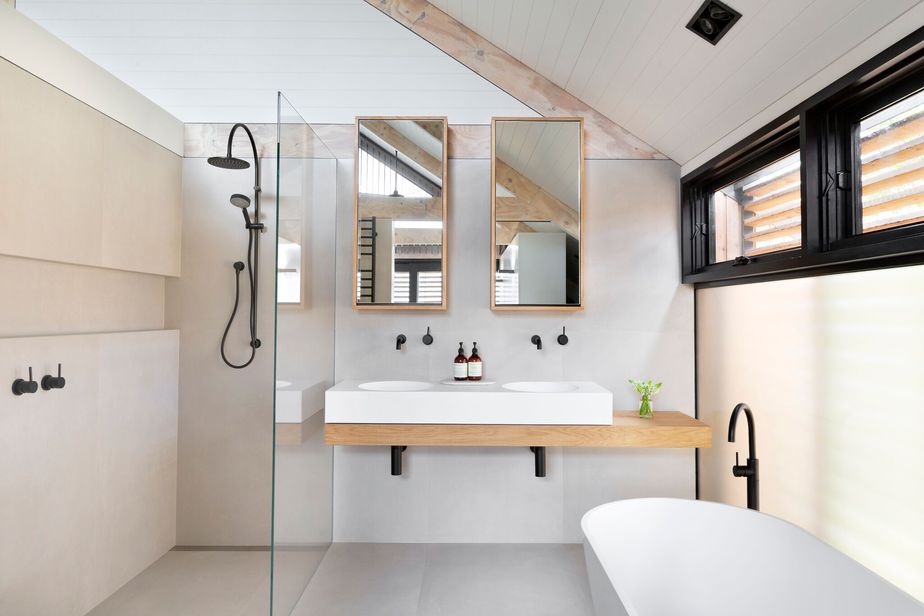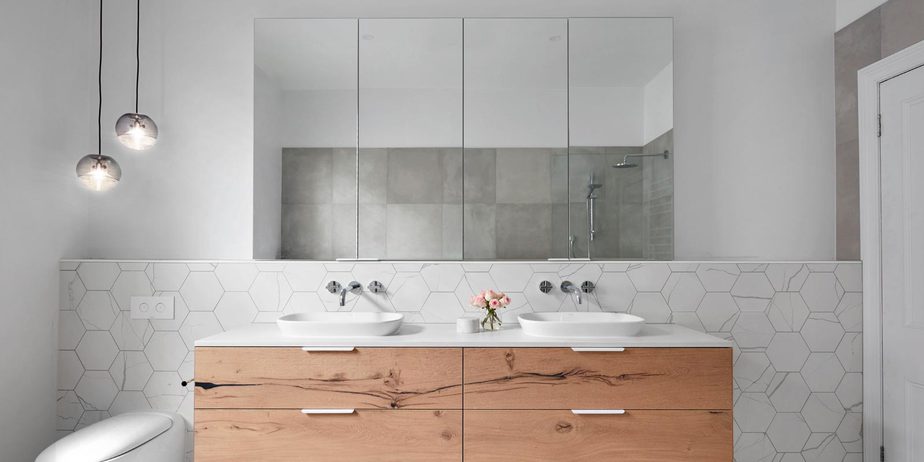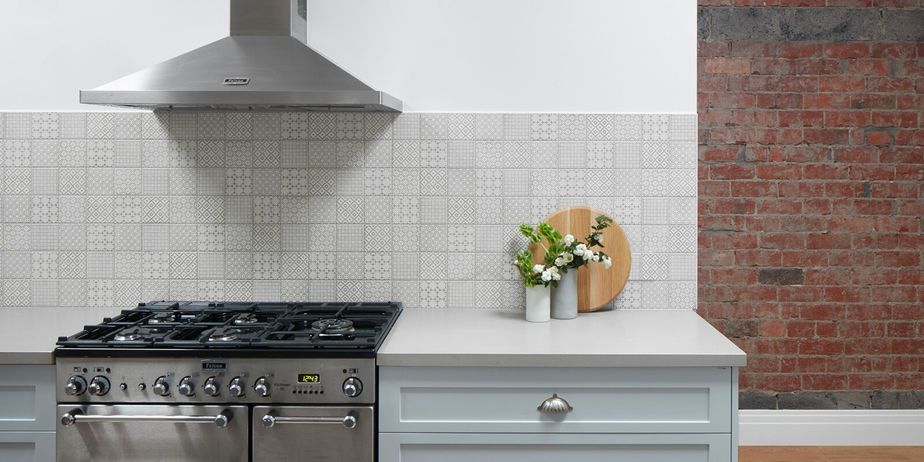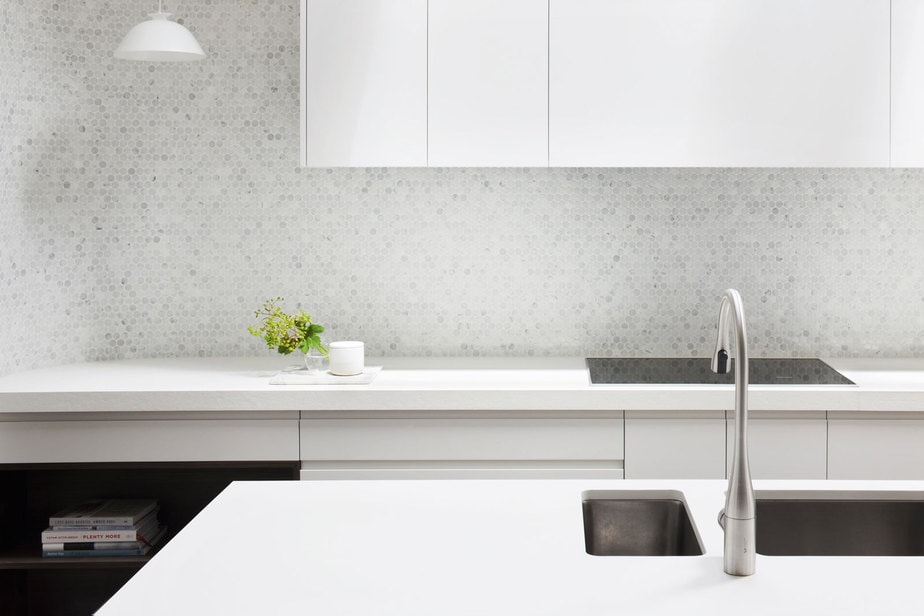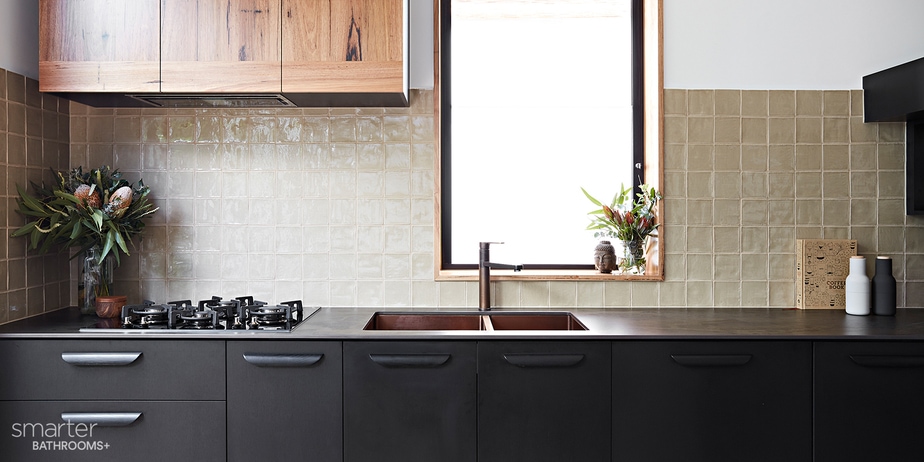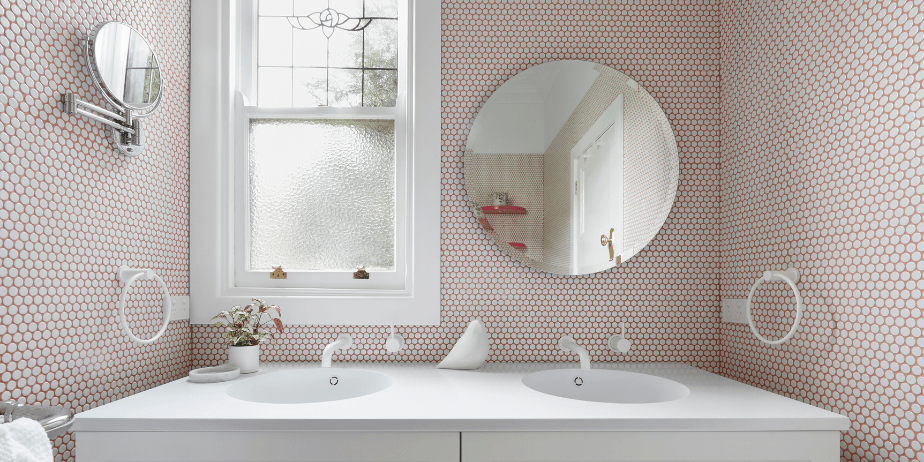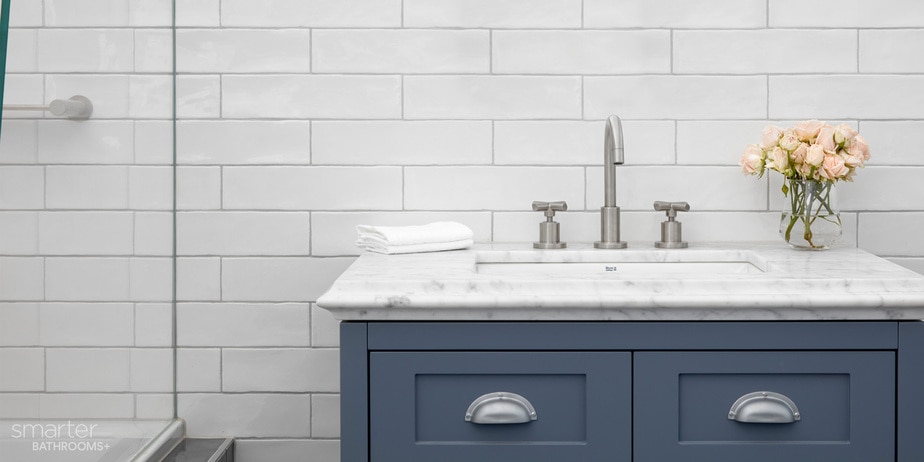Everything You Need to Know about Tiles
While there are many essential elements in a kitchen or bathroom design – colour scheme, cabinetry, tapware, fixtures, and so on – tiling is arguably the one factor that can single-handedly make or break a room.
Why? Tiles lay the foundations for the room’s entire design, encompassing the floors and walls. So it comes as no surprise that a regrettable choice of tiles or tiler will deliver an underwhelming result.
With so many options out there, getting the size, composition, pattern, material, and texture right can feel overwhelming. But it doesn’t need to be! If you know the basics, choosing tiles can be a fun and rewarding experience. Ready to learn the ABC of tiles? Read on!
So, what are the most common types of tiles and how do I use them? Glad you asked!
Large-format tiles
Large-format tiles have been a popular choice for quite some time. These can range in size from 600mm x 900mm to 2400mm x 1200mm and can have a huge impact on your space. Not only do these tiles make the room appear bigger, the easy-to-clean nature of them (bigger tiles require less grouting) means your home will look neater in the long run and help build a lasting sleek aesthetic.
For large format tiles, porcelain is a popular choice of material. The beauty of large format tiles lies in their classic look, a style that will never expire. One thing to be aware of is that, because of the bigger tile size, you’ll need two tilers to get the job done. This will cost a little more, but the results will be worth it.
Standard tiles
The benefit of choosing standard tiles (300mm x 600mm) is the plethora of options you’ll have when it comes to colour and design. If you have a vision of the finished room designed in your mind and your heart is set on a particular tile colour, standard tiles will offer you the best chance of finding it.
When you’ve discovered that perfect hue, there is a range of exotic ways you can lay the tiles, such as herringbone, chevron and brick bond patterns. The interesting geometric composition will help create visual movement and lend your bathroom or kitchen a real point of difference. One thing to be mindful of is the cost of laying tiles in such patterns. Intricate patterns, especially if they are done with smaller size tiles, require more skilled tilers and takes a little more time to lay, making them more expensive to install. So keep that in mind when budgeting your renovation.
Patterned tiles
If you’re thinking about installing patterned tiles, make sure you’re 100% sure about the design – it will certainly sway the room’s overall look. From subtle colour combinations on smooth tiles to intricately detailed designs on textured tiles, introducing pattern through your tiling is the ultimate way to express your personality in the room’s design.
You could replicate a pattern from floor to ceiling or include a feature wall within your chosen design. Don’t be afraid to get creative and include strips of patterned tiling into a clean, white-tiled wall – that way, you can inject fun into the room without it dominating the entire aesthetic.
Mosaic tiles
Mosaic tiling certainly hasn’t gone out of fashion. In fact, we are seeing more and more of it, particularly among our more creative clients. Mosaic tiling gives you the chance to be more experimental with shapes, colours and materials. For example, you could choose hexagonal shapes or penny rounds, ceramic or porcelain, dark or light, gloss or matte and multicoloured – the list is endless.
One way to incorporate a fairly flamboyant mosaic element into a more traditional home is to include it in the shower recess or as a kitchen splashback. Taking a backseat position in the design composition, it won’t steal the spotlight or dominate the aesthetic, but simply complement it with a twist of eccentricity. If you have a curved wall that you’re looking to tile, mosaics are a perfect choice.
Moroccan-style tiles
We couldn’t finish this blog without mentioning Moroccan-style tiles. With earthy, textured and layered interiors trending, it comes as no surprise that handmade-look tiles have made a huge comeback.
Drawing inspiration from traditional ceramics, Moroccan tiles are known for their irregular edge and wavy surface, which gives them that characteristic handcrafted look.
Perfect for a feature wall or a splashback, these tiles come in a wide variety of sizes and colours and can be mixed and matched to create beautiful designs. If you want your space to feel textured and have a subtle artisanal vibe, then handmade-look tiles could be your answer.
A side note on grouting…
Most of the time, the design effect of your tiling will come from the tiles themselves. But by thinking outside the box, you’ll discover that you can create quite an impact by focusing on what’s surrounding the tiles – the grout.
By using coloured you can settle on fairly plain tiles without ending up with a plain overall look. If you’re looking for a fun and experimental design that will get the guests talking, create a wall with less contrast by pairing dark tiles with dark grout, or give plain white tiles a pop with pink grout for a chic and fun look.
Now that you’ve learned the fundamentals of tiles, your next step is to visit a showroom. Experiencing the product in person is a must, as photos can’t show you its quality or how different types of lighting affect the tile and how its surface feels to the touch, etc.
Our showrooms in Port Melbourne and Burwood East are the perfect place to start, as you’ll not only be able to see and hold the tiles, but you’ll also get the chance to appreciate the high-quality finishes via our inspiring bathroom and kitchen displays.
Ready to renovate? Visit our showrooms or book a free in-home consultation with one of your expert interior designers today!
Inspiration and advice
Inspiration and advice
As featured in




